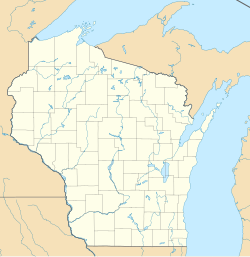| The Frank Lloyd Wright Visitor Center | |
|---|---|
 | |
| Former names | The Spring Green Restaurant, the Riverview Terrace Restaurant |
| General information | |
| Type | Restaurant |
| Architectural style | Usonian |
| Location | south of Spring Green, in Iowa County, Wisconsin |
| Coordinates | 43°08′38″N90°03′34″W / 43.1439°N 90.0595°W |
| Construction started | 1953 |
| Completed | 1967, 1969 |
| Design and construction | |
| Architect(s) | Frank Lloyd Wright |
The Riverview Terrace Restaurant, also known as The Spring Green Restaurant, is a building designed by architect Frank Lloyd Wright in 1953 near his Taliesin estate in Wisconsin. [1] He purchased the land on which to build the restaurant as, "a wayside for tourists with a balcony over the river." [2] Construction began the next year, with the roof being added by 1957. [3] The building was incomplete when he died in 1959, but was purchased in 1966 by the Wisconsin River Development Corporation and completed the next year as The Spring Green restaurant. [3] The building was listed on the National Register of Historic Places in 2024. [4]


